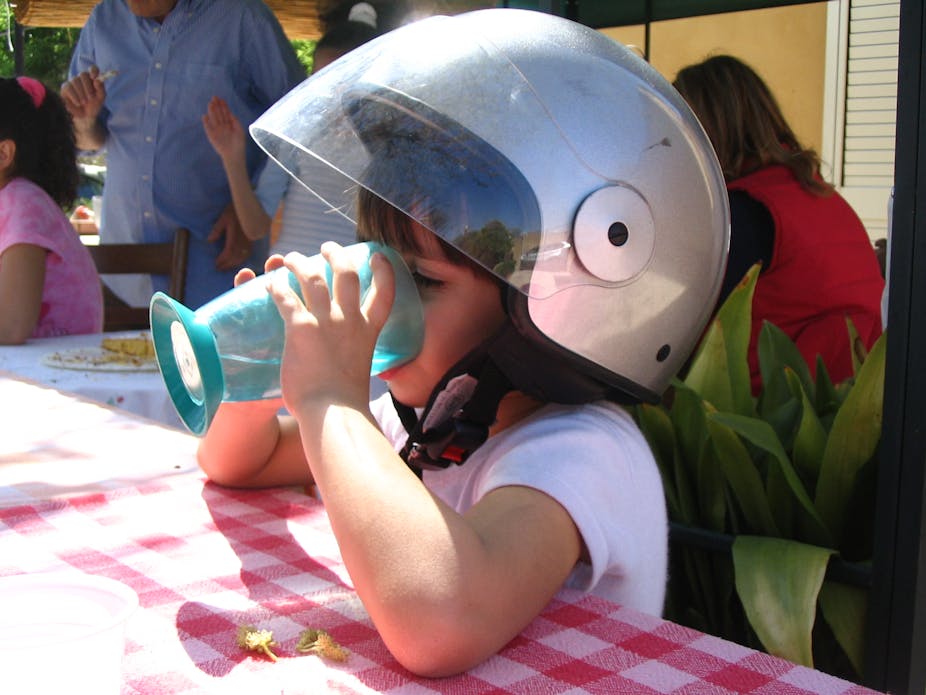We take an “efficiency” approach to childhood and child-rearing in Australia.
We want kids to grow up and become productive economic citizens without them deviating from identified pathways, and society wants a return on its investment.
We achieve policy goals by denying kids the opportunities to learn by trial and error, risk-taking, independent decision-making, problem solving, and “close calls”. “Sink or swim” and the associated mistakes of growing up are no longer available options.
This is a poor strategy in an ever-changing global environment that requires flexibility and ingenuity.
Coddling enshrined in policy
Policies, programs and advice help parents and kids get “the best start”, from pre-pregnancy to ensuring successful transitions to university and work. However, these policies tend to portray kids as fragile and unable to cope with significant change, rather than actors who learn and develop strategies for life.
As such, risk is viewed as a hazard, event or situation that harms kids, or as kids creating their own hazards, events or situations that hurt them. Both are seen as leading to long-term damage. And in both scenarios, its believed prevention and outcomes can be mitigated with the right intervention.
Policy tends to constrain all kids in order to protect the most vulnerable or least competent. But should we encourage kids to explore their environments and test their boundaries, even if some kids may experience harm? Or should we restrict all kids from exploration and boundary testing to prevent harm to the most unfortunate?
Understanding risk
I have been researching risk in relation to children’s independent mobility; that is, I looked at parents’ and policy views about kids travelling around by themselves on their bikes or by foot. I found policy tends to confuse the concept of risk.
Policy commonly uses the word “risk” interchangeably with “possibility”, “probably”, “chance”, “hazard”, “negative outcome” and “unsanctioned actions”.
Significantly, this all-purpose concept is stymieing our perspectives, our confidence, and our discretionary decision-making. The word is a destructive force in public views of kids’ competence and kids’ ability to use public places by themselves.
In Australia, fewer kids play outside by themselves than in the past. The age at which kids are allowed to go places by themselves has increased. And insurance and risk management practices have limited the challenge of playground equipment. Police warnings often state that kids should not be in public space by themselves.
Because we worry about kids, risk aversion is seen as the only appropriate way to deal with uncertainty. This cuts into adult trust of children’s competence and responsibility, and of other adults.
This approach to risk and kids is not biological; it is socio-cultural. Australian kids have not evolved differently to those in other countries nor has there been a localised genetic mutation toward incompetency.
Refusing to acknowledge children’s urban competence and focus on potential harms and consequences is not particularly Australian, nor is it universal. We can change how we view risk and kids’ competence.
A cross-cultural perspective
Australia’s attitude reflects social trends in England and the USA. These emphasise individual risk management rather than collective responsibility.
At its extreme, police in these societies consider independently mobile kids younger than ten to be “endangered” by their parents. In Japan, on the other hand, it is common for children to travel to and from school without adults by age seven. Many parents want to foster their kids’ independence and competence; kids’ safety in urban environments is viewed as a community responsibility.
In parts of South Africa and Ghana, independent mobility is associated with kids’ role as important contributors to their families through cooking, cleaning, shopping, and collecting firewood.
Kids have pride in contributing to the family, and adults view kids’ participation as building skills for the future. As with Japan, there appears to be a greater focus on kids being competent people who are part of, rather than separate from, family and community life.
Balancing risk and possibilities
Risk is a dynamic relationship between people and our environments. It’s based on how we want to use our environments, what our environments offer, and whether we can negotiate them successfully. The way we value trade-offs for situations will differ.
When it comes to kids, our narrow views of kids’ development, negative views of risk and increasing restrictions on kids are likely to continue, unless we give competence a higher value.
Kids develop mastery in their urban environments when they can develop their knowledge and skills, creating a diverse repository of experiences that they can access and apply.
Do we really want the next generation of adults to assess risk before possibilities, or reject challenges because it may not turn out “right”?

